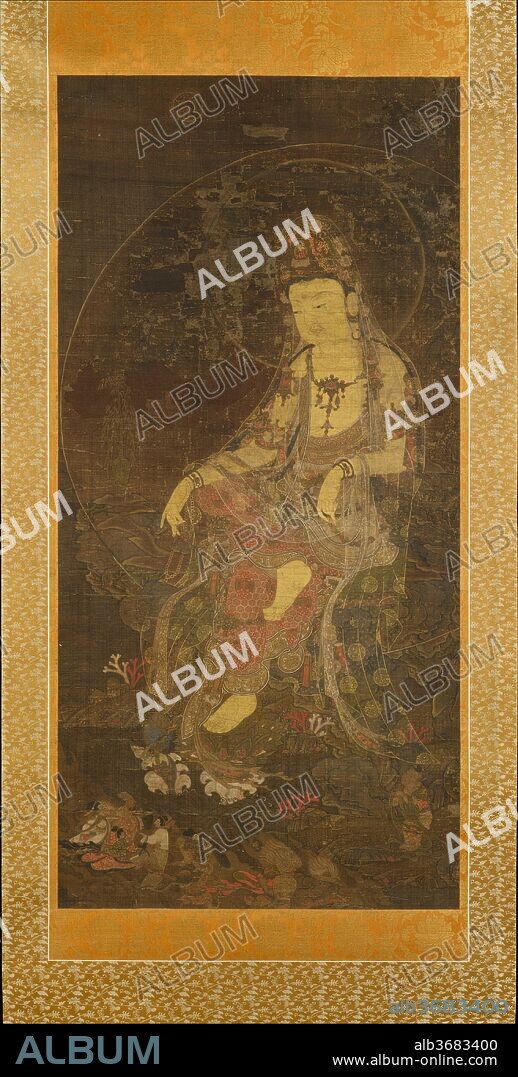alb3683400
UNIDENTIFIED ARTIST. Water-moon Avalokiteshvara

|
Zu einem anderen Lightbox hinzufügen |
|
Zu einem anderen Lightbox hinzufügen |



Haben Sie bereits ein Konto? Anmelden
Sie haben kein Konto? Registrieren
Dieses Bild kaufen
Autor:
Titel:
Water-moon Avalokiteshvara
Untertitel:
Siehe automatische Übersetzung
Water-moon Avalokiteshvara. Artist: Unidentified Artist. Culture: Korea. Dimensions: Image: 45 1/16 x 21 7/8 in. (114.5 x 55.6 cm)
Overall with knobs: 79 3/8 x 30 1/8 in. (201.6 x 76.5 cm)
Overall with mounting: 79 3/8 x 28 in. (201.6 x 71.1 cm). Date: first half of the 14th century.
The Water-moon Avalokiteshvara (Korean: Suwol gwaneum) is an iconographic type that was popular in Korea during the Goryeo period. She was worshipped for her ability to prevent calamities and diseases and to safeguard travelers on their journey. This painting shows the resplendently attired bodhisattva in three-quarter view, seated on a rocky outcropping above the waves. At the top is a diminutive moon, in which a hare pounds the elixir of immortality. At the bodhisattva's feet, the dragon king leads a group of elegantly dressed miniature figures; behind them follow sea monsters bearing precious gifts. The boy pilgrim Sudhana (Korean: Seonjae dongja) stands at the lower right; his encounter with this deity, as recounted in the Avatamsaka (Flower Adornment) Sutra, provides the textual source for the scroll.
The delicate and splendid gold-painted design on the robes of the deities is a noteworthy trademark of Goryeo Buddhist painting. Another is that the pigments were applied to both the back and front of the semitransparent silk, intensifying their hues and luminosity, though some have faded over time due to light exposure.
Technik/Material:
Hanging scroll; ink and color on silk
Zeitraum:
Goryeo dynasty (918-1392)
Museum:
Metropolitan Museum of Art, New York, USA
Bildnachweis:
Album / Metropolitan Museum of Art, NY
Freigaben (Releases):
Model: Nein - Eigentum: Nein
Rechtefragen?
Rechtefragen?
Bildgröße:
2261 x 4466 px | 28.9 MB
Druckgröße:
19.1 x 37.8 cm | 7.5 x 14.9 in (300 dpi)
Schlüsselwörter:
 Pinterest
Pinterest Twitter
Twitter Facebook
Facebook Link kopieren
Link kopieren Email
Email
